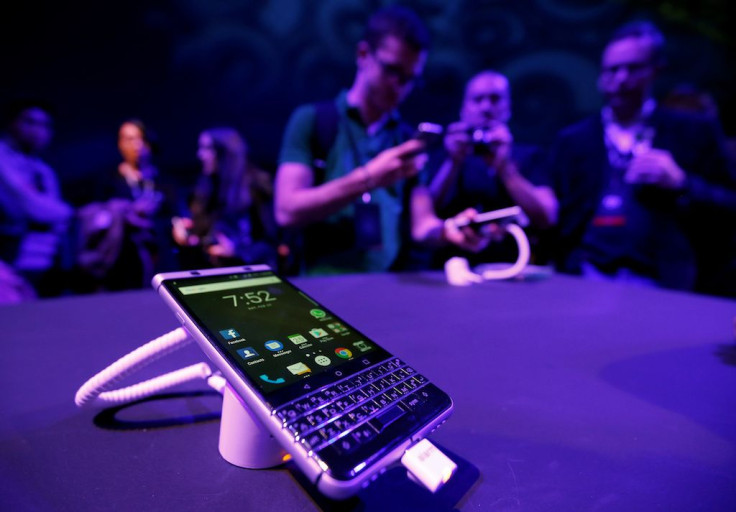BlackBerry KeyOne Bend Test Shows Display Isn't Glued Down With Adhesive

The Blackberry KeyOne is now available in the U.S., but some consumers might think twice before picking up the handset. YouTube Channel JerryRigEverything recently put the BlackBerry smartphone through a durability test and discovered its screen isn’t glued down with any adhesive.
JerryRigEverything’s Zack Nelson put the BlackBerry KeyOne through a series of scratch test first. The handset was able to handle most of the serious scratches it dealt with on its screen, body, cameras and the physical QWERTY keyboard. Even after getting severe scratches, all of those continued to function normally as they should.
Where the BlackBerry KeyOne truly failed in was with the bend test. Not only did the handset bend, the device’s display also popped right out of the device itself. The reason as to why this happened is because TCL Communication, the company that manufactures the KeyOne, didn’t use any adhesives to glue down the handset’s display. Nelson even pointed out in his video that other major phone makers use a lot of adhesives on the back of their smartphones’ displays.
“I was even holding the screen when it popped out of the frame.” Nelson said in his video. “It surprised me to see the screen do that since most other screens, like Samsung, has so much adhesive behind them it takes a high-powered heat gun or industrial hotplate to remove them.”
He also bent the BlackBerry KeyOne on the other side, which instantly stopped the display from functioning. The ribbon cable, which connects the display to the device’s other internals, is also easily torn since it’s the first thing that gets pulled out when the display pops out. The handset’s power button also got deformed because the glass isn’t providing any structural support without any adhesive.
Other BlackBerry KeyOne users on the CrackBerry forums have also reported that their handset’s display would easily pop off after small drops. The Verge pointed out that it’s possible that a small number of handsets are affected by this issue. For some reason, these handsets may not have had adhesives on the back of their displays.
TCL is still a bit new in the smartphone game. The KeyOne is only the third BlackBerry phone that the company has manufactured, and was supposed to mark the return of the signature physical QWERTY keyboard. TCL also made the BlackBerry DTEK50 and DTEK60 in 2016, but both arrive with an all-touchscreen design.
For those who’ve already purchased the BlackBerry KeyOne, it’s best to find a phone case that can prevent the display from popping out. There really is no way of telling if a user’s handset is affected by this issue, so everyone who owns the KeyOne should be mindful when they have the hand set in their pockets.
Although this issue might be terrible for users, it does present a bit of an advantage. Since the BlackBerry KeyOne’s display isn’t glued down with any adhesives, it should be easier to get a replacement for the display, as pointed out by 9To5Google.
© Copyright IBTimes 2025. All rights reserved.




















